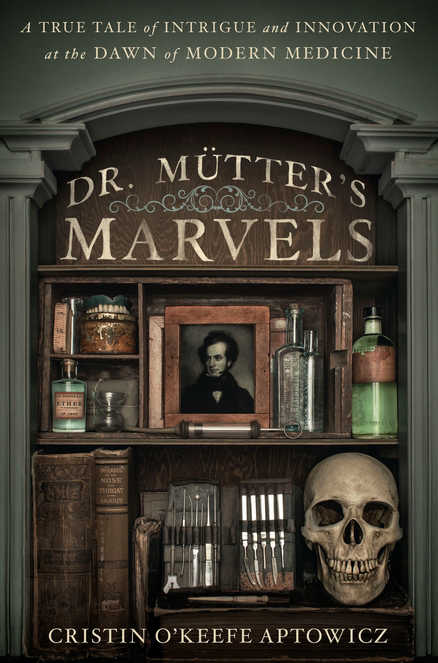You’ve made an important decision: next year, you’re going under the knife.
It’s nothing important, just a medical issue that you’ve put off long enough. Treatment and technology are on your side now although, as you’ll see in “Dr. Mütter’s Marvels” by Cristin O’Keefe Aptowicz, some of the methods your doctor uses may be nearly two centuries old.
Young Thomas Mutter was a spoiled child.
His parents doted on him and gave him everything: toys, clothes, a Shetland pony, all the accoutrements befitting an early-1800s upper-class Virginia lad. After Thom’s parents, siblings, and grandmother died all within four years’ time, however, everything changed: 7-year-old Thom went to live with a guardian, who considered the boy somewhat of a burden.
Still, he made sure that his ward got an education but at the end of college, Thom fell ill. He was told that the malady would plague him for the rest of his life and he was advised to quit school; instead, impressed with the care he’d received, he decided to become a doctor. He proceeded to medical school in Philadelphia , then to Paris where it was said that a doctor could gain more experience. When Mütter returned to Pennsylvania , he came bursting with ideas and an umlaut in his name.
Healthcare in America in the early-1800s was, to say the least, lacking. Tuberculosis, cholera, yellow fever, and syphilis were common and misunderstood. Other afflictions were the result of workplace conditions or home accidents. Those were the things Mütter focused on; extraordinarily compassionate and very beloved, he’d learned the art of reconstruction in Paris and had devised a way to repair the wounds of burn victims, thus saving those “monsters” from a hidden life.
Between teaching at Philadelphia’s Jefferson Medical College and performing surgery, Mütter lobbied for a hospital and recovery rooms for patients, rather than sending them straight home after surgery. He embraced new technologies of anesthesia and the idea of preventing disease through cleanliness. He was, says Aptowicz, a genius – albeit, an ailing one who knew his health problems would shorten his life.
And so, before he died in 1859 at age 47, Thomas Dent Mütter strove to leave one last legacy…
So you say you love a good drama? “Dr. Mütter’s Marvels” gives you plenty of that, plus intrigue, history, bickering, backbiting, and biography.
But while that last feature, a biography on Thomas Mütter, is the focus here, author Cristin O’Keefe Aptowicz doesn’t at ignore the other talented and innovative physicians who appeared in and influenced Mütter’s life and his work. Aptowicz’s inclusion of these other men (women weren’t allowed into medical school then) enhances what we learn about Mütter, who would’ve been lauded today but now seems slightly forgotten.
I loved this book for its biography, but I stuck with it for its history and I think that if you’re up for a good tale, then you’ll like it, too. For the medically-minded, historians, or for anyone who likes a good bio, “Dr. Mütter’s Marvels” is a delight, no matter how you slice it.
The Bookworm is Terri Schlichenmeyer. Email her at bookwormsez@gmail.com.

